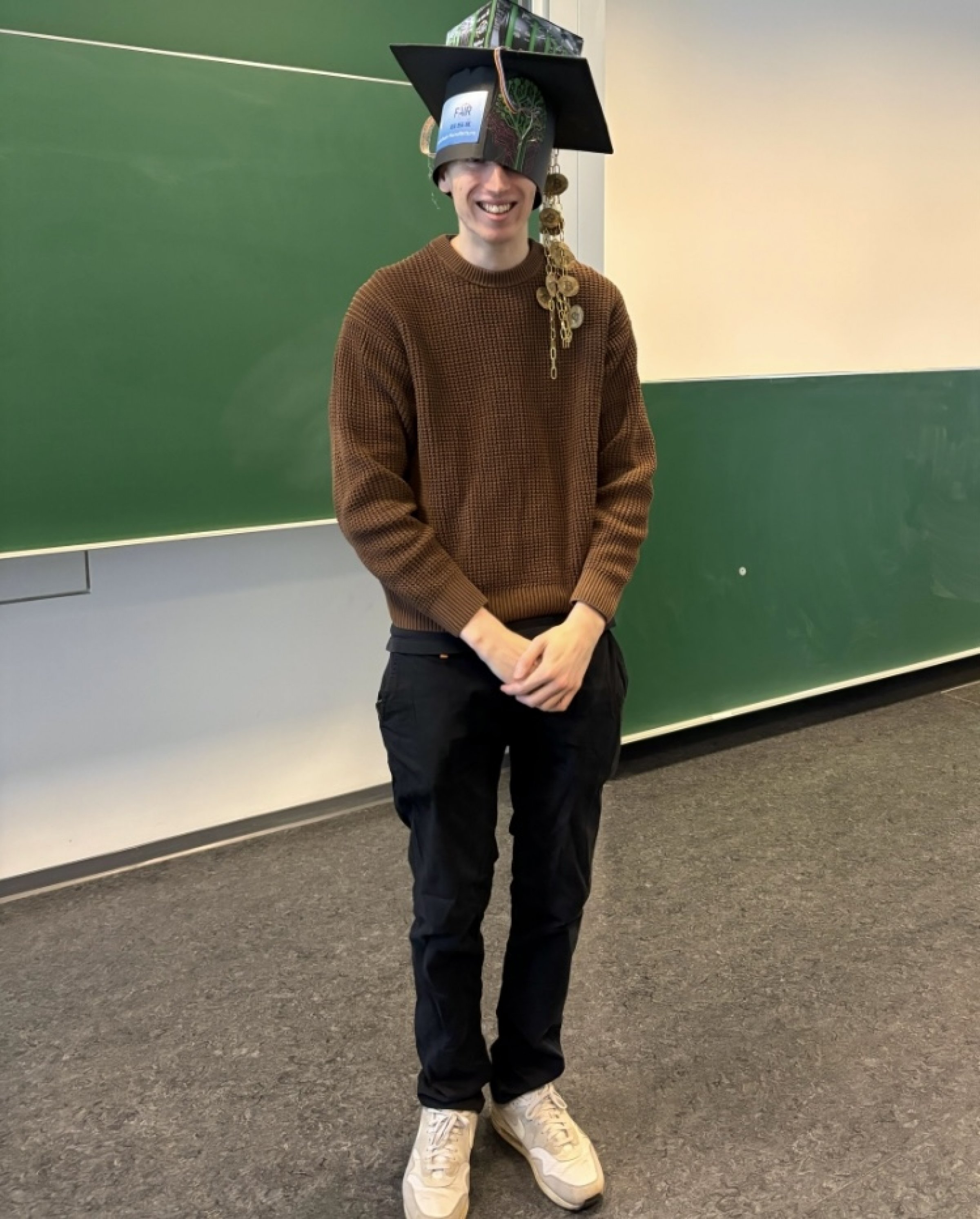April 17, 2025
Doctorate Felix Hoffmann
Blockchain Research
Felix Hoffmann defended his doctoral thesis on the novel useful work blockchain architecture gophy on April 17th 2025.
Felix Hoffmann from the IRI workgroup received his doctorate on April 17th, at FIAS. In his dissertation supervised by FIAS Senior Fellow Udo Kebschull, he attempted to design and implement a novel blockchain architecture that meets the requirements of a High Energy Physics experiment. “We wanted to research whether it is possible to design a novel blockchain architecture in which the computational power of the network is used to both secure the underlying blockchain while at the same time generating valuable data.”, Felix explains. “We were particularly interested in the feasibility of using reproducible Monte Carlo simulations for a High Energy Physics experiment as the underlying block problem so that miners can provide a real-world scientific experiment with valuable data.”
Consensus algorithms allow nodes of a public blockchain to agree on what the current state should be. In popular networks such as Bitcoin, an approach called Proof-of-Work is used to achieve consensus between nodes. The major drawback of this approach is that large amounts of energy are wasted on repeatedly calculating the outputs of hash functions. The data generated from this process has no relevance outside the blockchain network.
In his dissertation, Hoffmann researched whether a novel approach called Proof-of-Useful-Work is feasible. The fundamental idea of this approach is to replace the hash-based block problem from Proof-of-Work with a different problem that has real-world relevance. This would make it possible to use the available computational power to supply a scientific real-world experiment with valuable data instead of wasting it, while at the same time securing the underlying blockchain. The dissertation is the first academic attempt to design and implement a Useful-Work-Blockchain that employs block problems from the domain of High Energy Physics.
The blockchain architecture that emerged from this doctoral thesis has been named Gophy and uses a novel consensus algorithm that was specifically designed for use in the context of a Useful-Work-Blockchain. By combining concepts from different areas of research, a bridge between the disciplines blockchain technology and High Energy Physics has been created. In order to show that the proposed blockchain architecture can function in practice and to evaluate the effectiveness of algorithms involved, all the proposed ideas have been implemented in the Golang tool Gophy which has been open-sourced on GitHub (https://github.com/felix314159/gophy). The entire blockchain architecture has been written from scratch by Hoffmann and makes use of the State-of-the-Art networking stack libp2p for node discovery and message propagation.
Since February 2025, Felix has been working full-time as a protocol tester at the Ethereum Foundation.
Publications:
- DFTWS: Deterministic, Fair and Transparent Winner Selection for the Useful Work Blockchain Gophy, ACM Journal for Distributed Ledger Technologies: Research and Practice, 2025, https://doi.org/10.1145/3721139
- Gophy: Novel Proof-of-Useful-Work blockchain architecture for High Energy Physics, IEEE 6th International Conference on Blockchain Computing and Applications (BCCA), 2024, https://doi.org/10.1109/bcca62388.2024.10844433
- Designing a Proof-of-Useful-Work (PoUW) blockchain for CBM", CBM Progress Report, 2023, https://doi.org/10.15120/GSI-2024-00765
- Challenges of Proof-of-Useful-Work (PoUW), IEEE 1st Global Emerging Technology Blockchain Forum: Blockchain and Beyond (iGETblockchain), 2022, https://doi.org/10.1109/igetblockchain56591.2022.10087185
